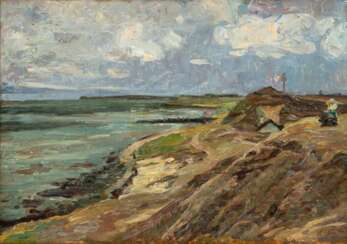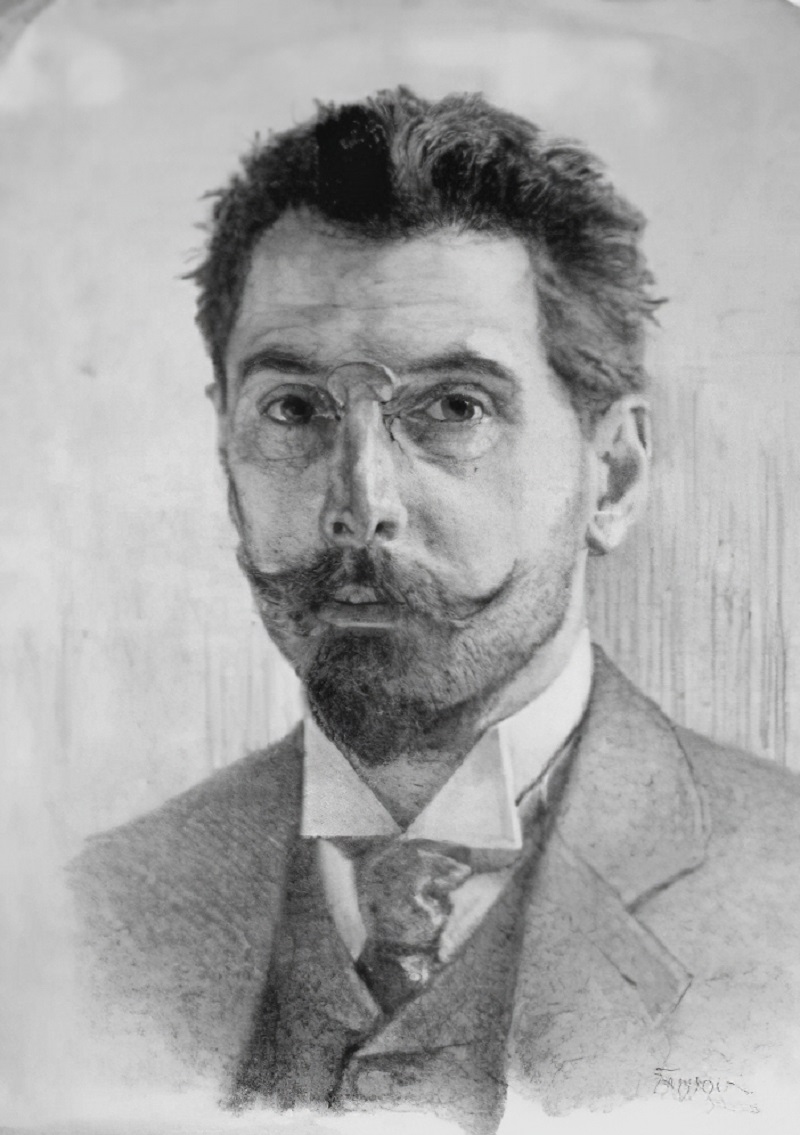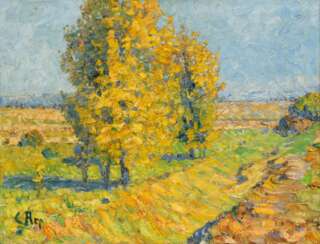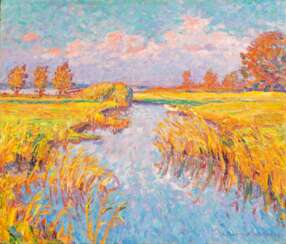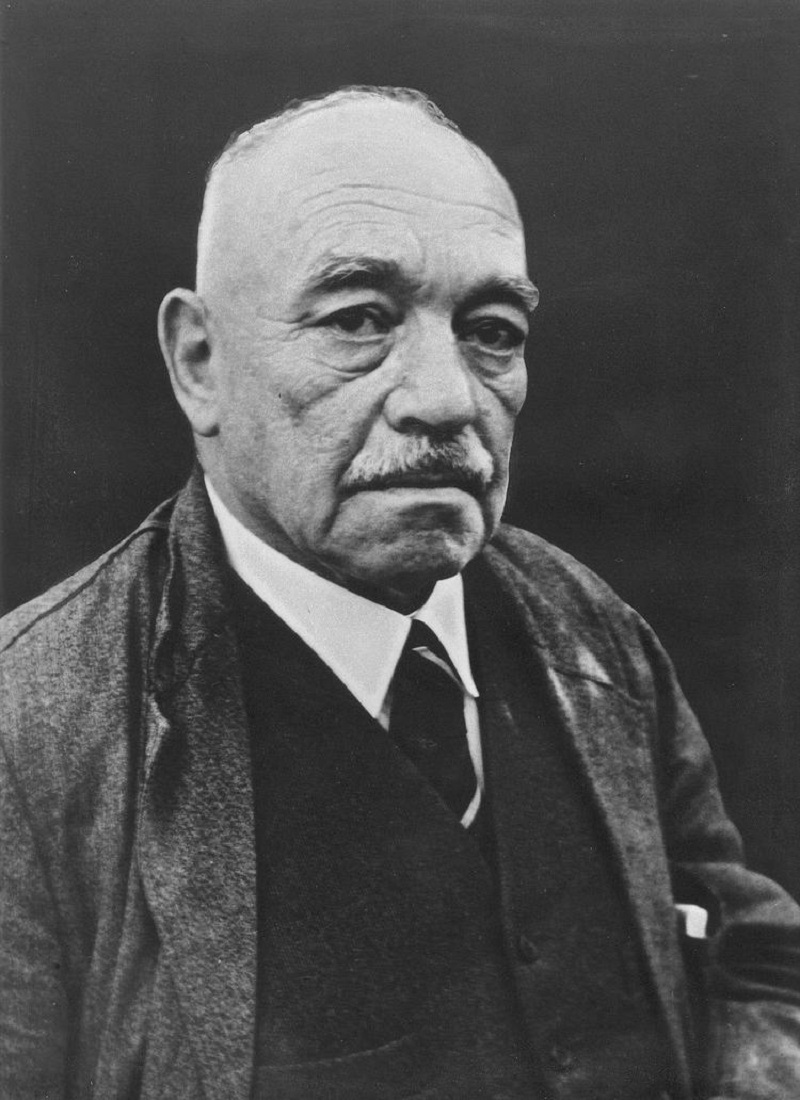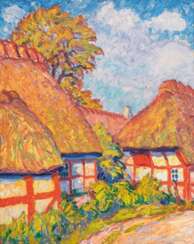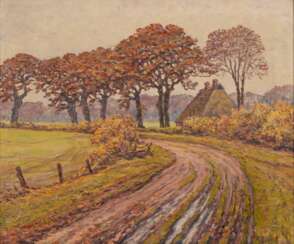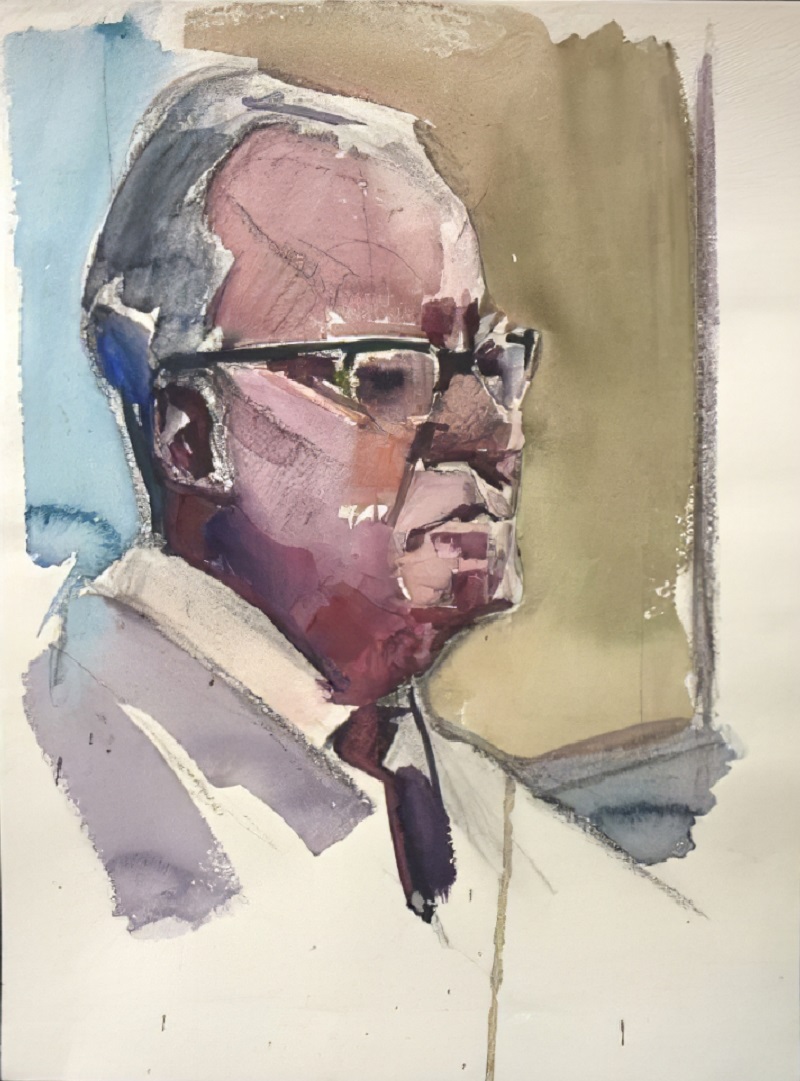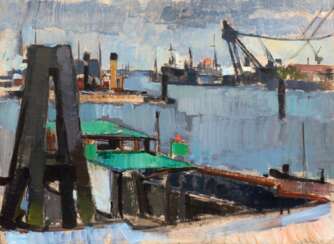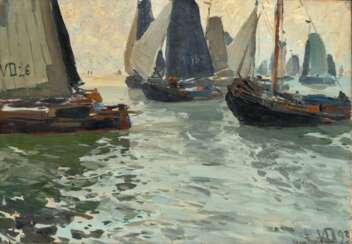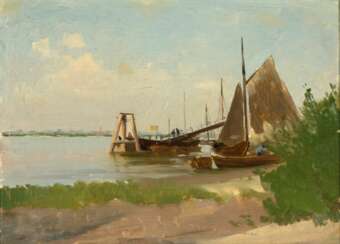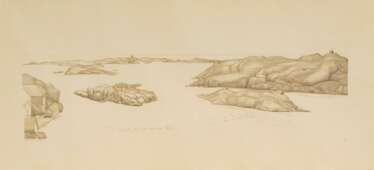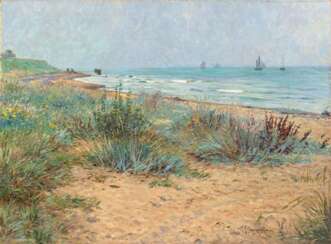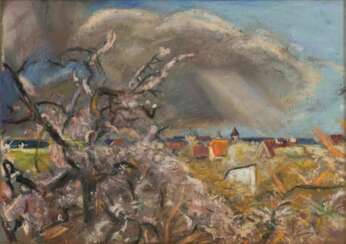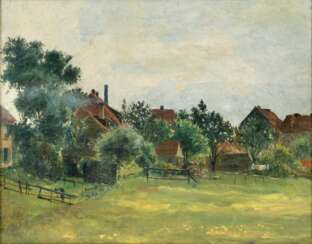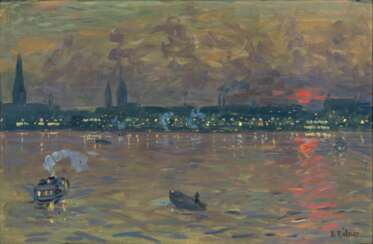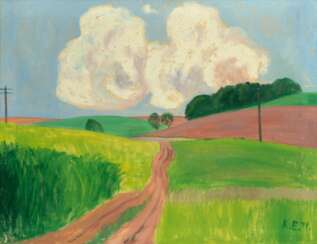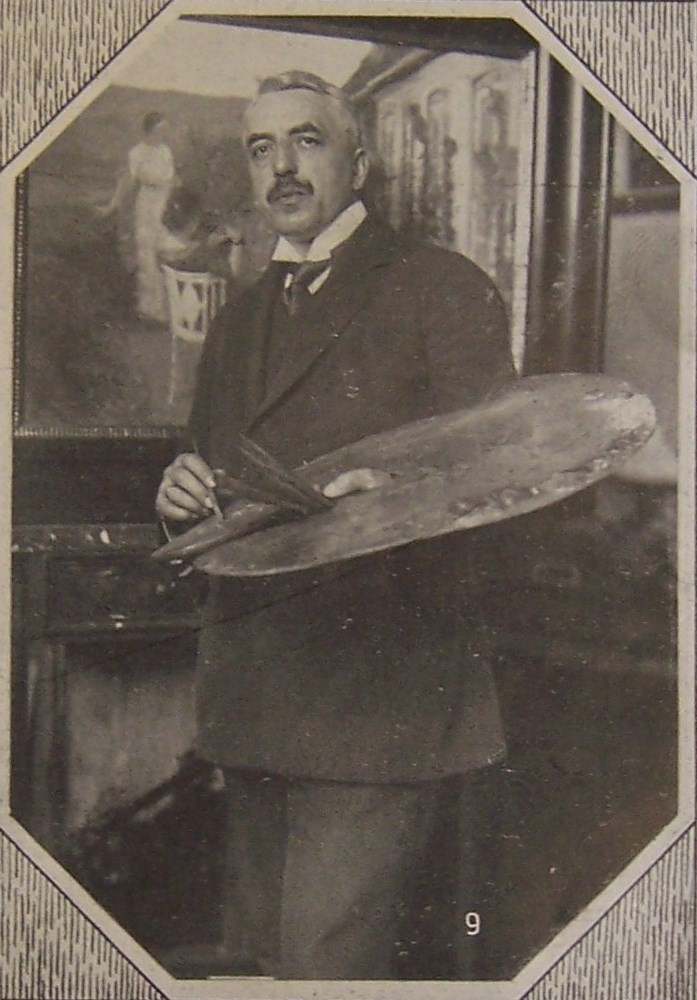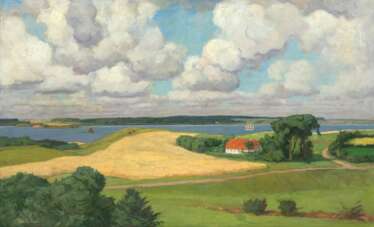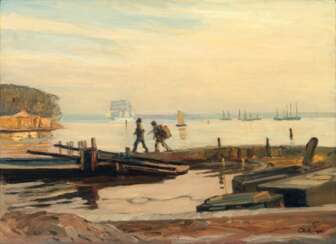
Art between tradition and modernity — Kunstsammlung eines norddeutschen Finanzunternehmens


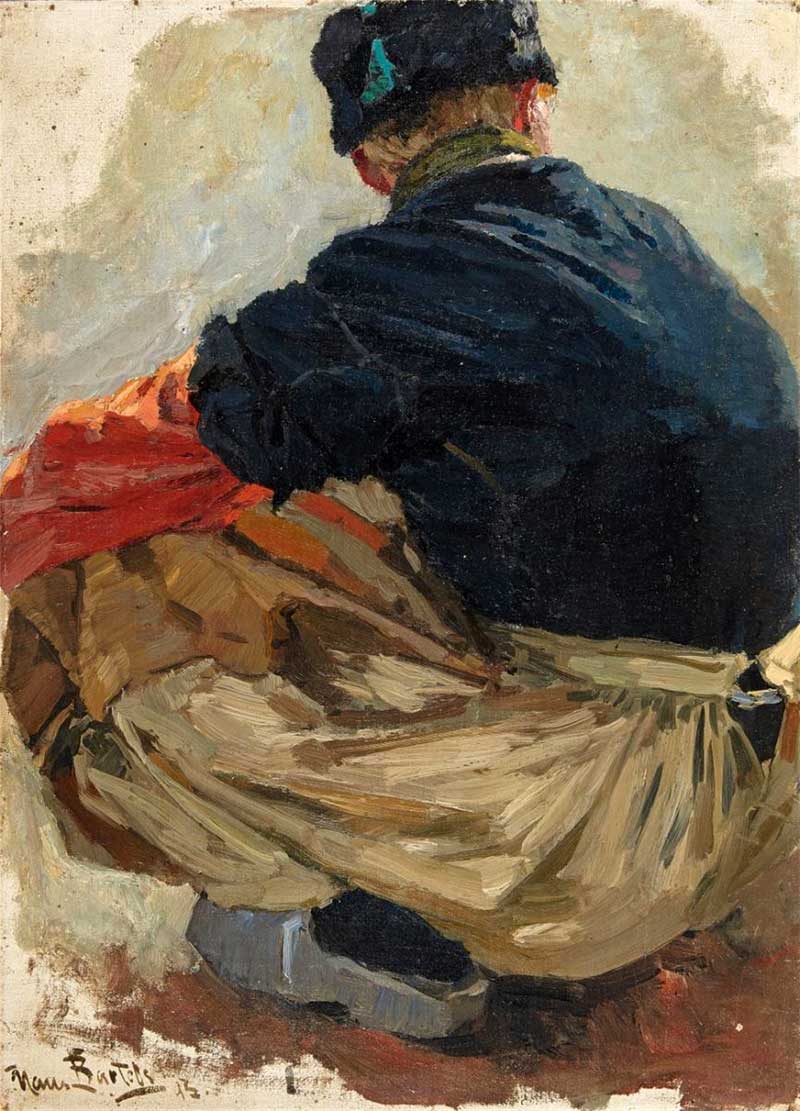
Hans von Bartels was a German painter.
Bartels is associated with the Düsseldorf school of painting. Although an oil painter of great power, he is also one of the leading German water-colour painters, mainly of marines and scenes of fishing life, painted with rude vigour and a great display of technical skill. Bartels made a great contribution to the development of the watercolour. He was the first to use watercolour paint of large formats without the earlier conventions. From 1887 Von Bartels came every summer to the Dutch coast, especially to Katwijk aan Zee, to paint the fisherfolk and their labour. He excels in storm scenes and in depicting the strong, healthy fishing-folk of the northern coasts. He became an honorary member of leading English, German, Dutch, Belgian and Austrian art societies.
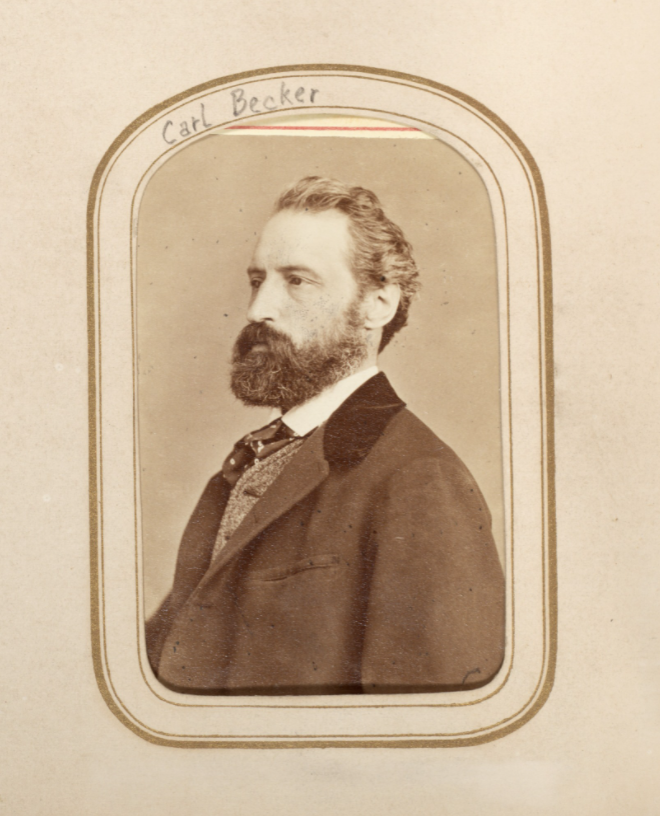
Carl Emil Rudolf Ludwig Becker was a German marine artist.
He was awarded gold medals at the International Art Exhibition of 1894, in Vienna, and the Große Berliner Kunstausstellung of 1896. Three years later, he was one of the co-founders of the Düsseldorfer Künstler-Vereinigung (artists' association). After the turn of the century, marine painting was heavily promoted by Kaiser Wilhelm II, who was attempting to make Germany a major sea power. As a result, the demand for Becker's paintings increased farther inland.
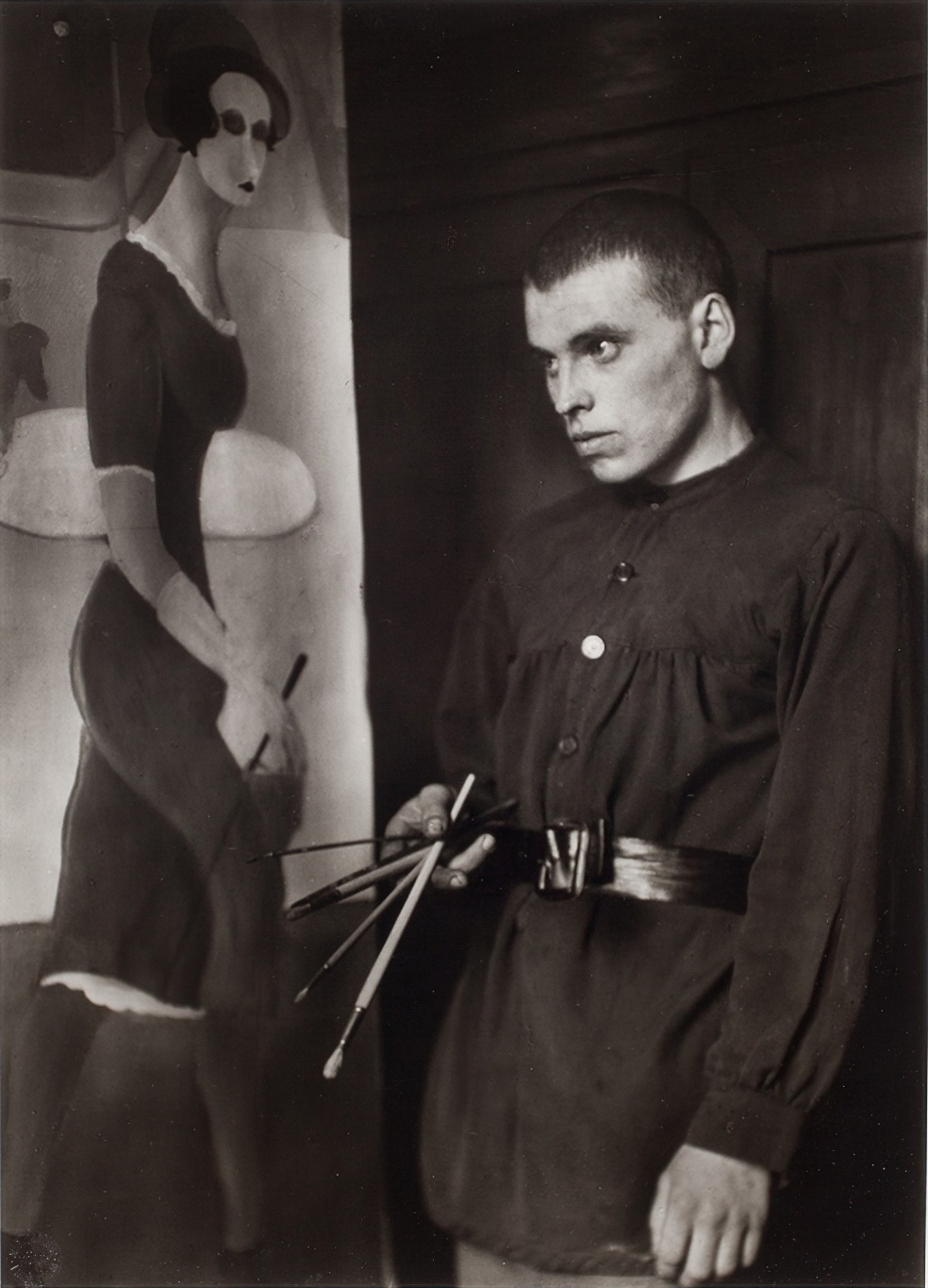
Gottfried Waldemar Brockmann was a German artist, educator, publisher, and served as a cultural advisor for the city of Kiel, Germany. He taught at Muthesius Academy of Art in Kiel.

Gottfried Waldemar Brockmann was a German artist, educator, publisher, and served as a cultural advisor for the city of Kiel, Germany. He taught at Muthesius Academy of Art in Kiel.

Gottfried Waldemar Brockmann was a German artist, educator, publisher, and served as a cultural advisor for the city of Kiel, Germany. He taught at Muthesius Academy of Art in Kiel.
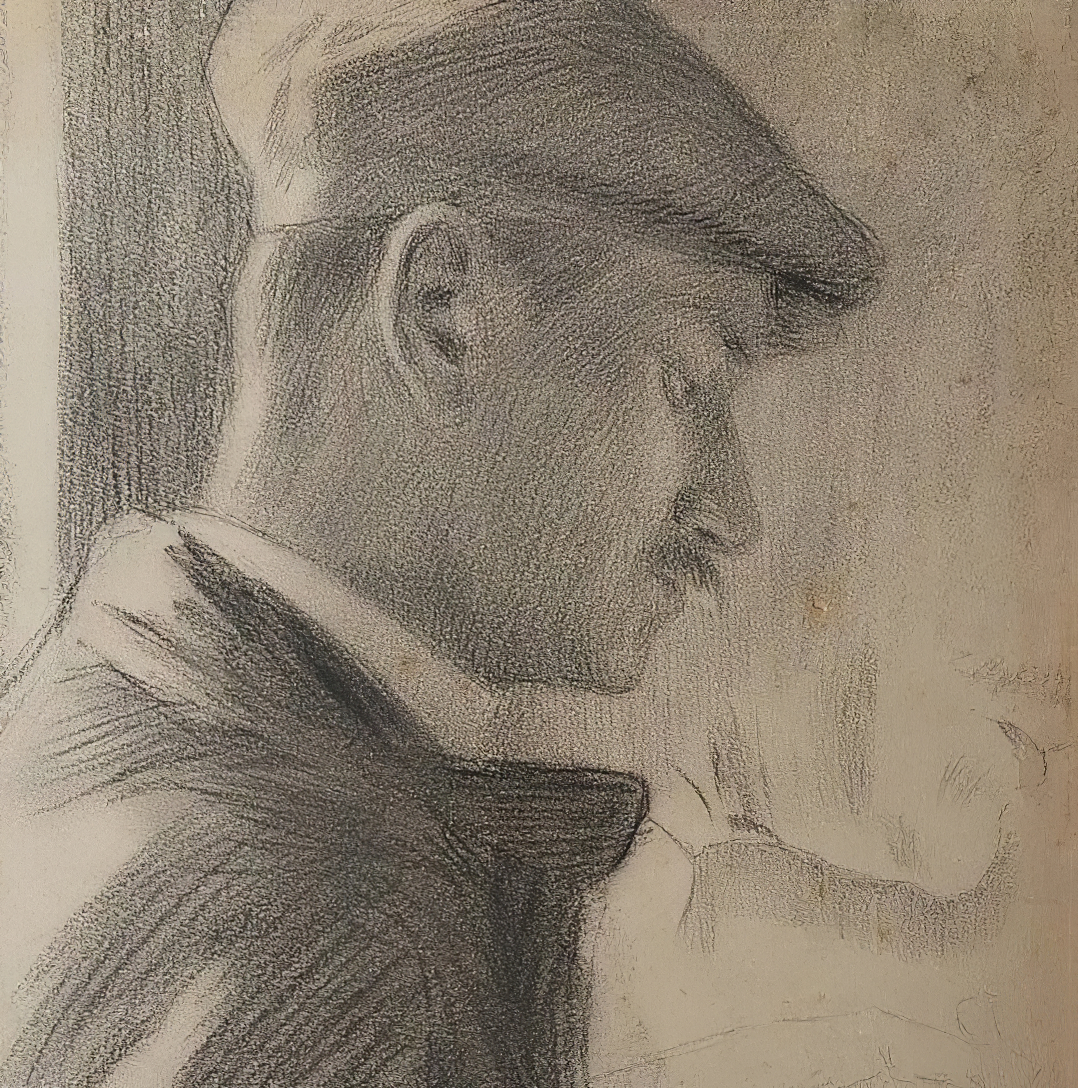
Georg Burmester was a German artist of the late 19th - first third of the 20th centuries. He is known as a painter, graphic artist, impressionist, representative of the Düsseldorf art school, and teacher.
Burmester worked mainly in the genres of landscape and marinas, but among his works there are also still lifes, as well as works in the genre of nude. He was a teacher at the Kassel Art School from 1912 to 1930 and was promoted to the rank of professor in 1917.

Georg Burmester was a German artist of the late 19th - first third of the 20th centuries. He is known as a painter, graphic artist, impressionist, representative of the Düsseldorf art school, and teacher.
Burmester worked mainly in the genres of landscape and marinas, but among his works there are also still lifes, as well as works in the genre of nude. He was a teacher at the Kassel Art School from 1912 to 1930 and was promoted to the rank of professor in 1917.

Georg Burmester was a German artist of the late 19th - first third of the 20th centuries. He is known as a painter, graphic artist, impressionist, representative of the Düsseldorf art school, and teacher.
Burmester worked mainly in the genres of landscape and marinas, but among his works there are also still lifes, as well as works in the genre of nude. He was a teacher at the Kassel Art School from 1912 to 1930 and was promoted to the rank of professor in 1917.
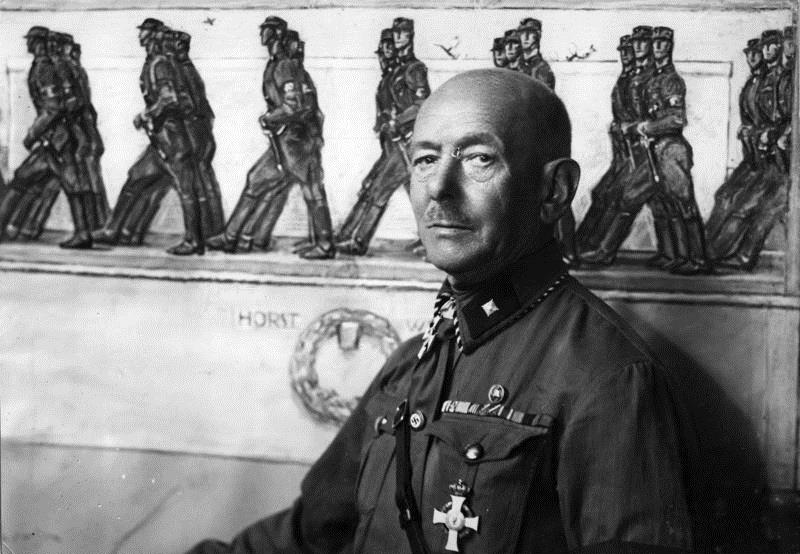
Ludwig Julius Christian Dettmann was a German artist of the late 19th century and the first half of the 20th century. He is known as one of the leading representatives of the Secession in Germany.
Dettmann began his career as an illustrator and in 1895 became a professor at the Berlin Academy of Arts. He then switched to landscape painting, worked in oil and watercolor techniques and became one of the first Impressionists in Germany. In 1898 the artist joined the Association of German Free Artists and co-founded the Berlin Secession. In 1900 Dettmann became director of the Königsberg Academy of Arts and promoted the development of the Nida colony of landscape artists on the Curonian Spit.

Ludwig Julius Christian Dettmann was a German artist of the late 19th century and the first half of the 20th century. He is known as one of the leading representatives of the Secession in Germany.
Dettmann began his career as an illustrator and in 1895 became a professor at the Berlin Academy of Arts. He then switched to landscape painting, worked in oil and watercolor techniques and became one of the first Impressionists in Germany. In 1898 the artist joined the Association of German Free Artists and co-founded the Berlin Secession. In 1900 Dettmann became director of the Königsberg Academy of Arts and promoted the development of the Nida colony of landscape artists on the Curonian Spit.

Ludwig Julius Christian Dettmann was a German artist of the late 19th century and the first half of the 20th century. He is known as one of the leading representatives of the Secession in Germany.
Dettmann began his career as an illustrator and in 1895 became a professor at the Berlin Academy of Arts. He then switched to landscape painting, worked in oil and watercolor techniques and became one of the first Impressionists in Germany. In 1898 the artist joined the Association of German Free Artists and co-founded the Berlin Secession. In 1900 Dettmann became director of the Königsberg Academy of Arts and promoted the development of the Nida colony of landscape artists on the Curonian Spit.
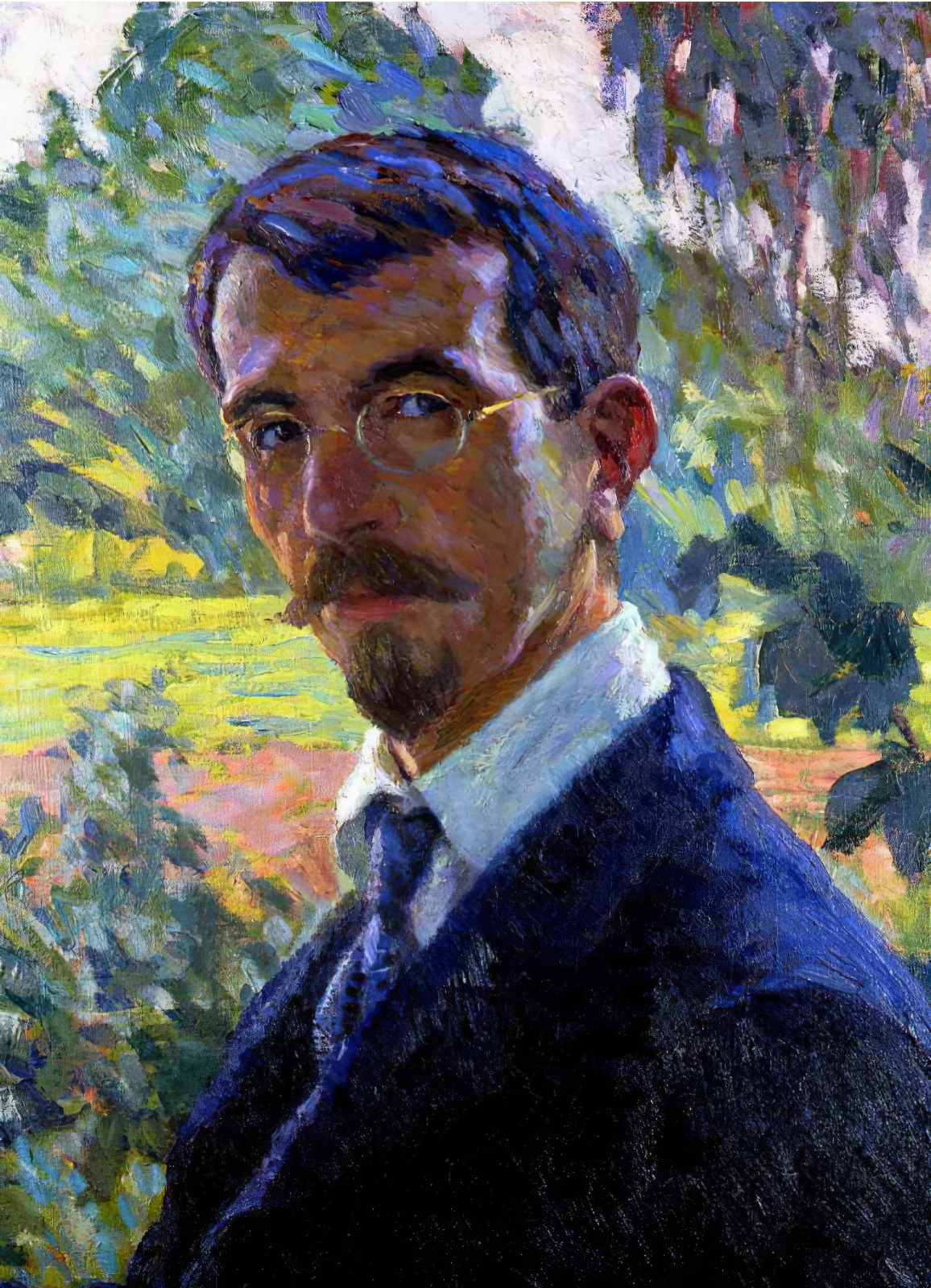
Wilhelm Heinrich Ernst Eitner was a German painter of the late nineteenth and first half of the twentieth centuries. He is known as an impressionist painter and teacher.
Eitner produced portraits, landscapes, and woodcuts in a style reminiscent of Japanese art. Despite initial rejection in German society of his impressionist style of painting, over the years he gained recognition and even the title "Claude Monet of the North." Eitner was a member of numerous art associations. His works are preserved in the Hamburg Kunsthalle.

Wilhelm Heinrich Ernst Eitner was a German painter of the late nineteenth and first half of the twentieth centuries. He is known as an impressionist painter and teacher.
Eitner produced portraits, landscapes, and woodcuts in a style reminiscent of Japanese art. Despite initial rejection in German society of his impressionist style of painting, over the years he gained recognition and even the title "Claude Monet of the North." Eitner was a member of numerous art associations. His works are preserved in the Hamburg Kunsthalle.
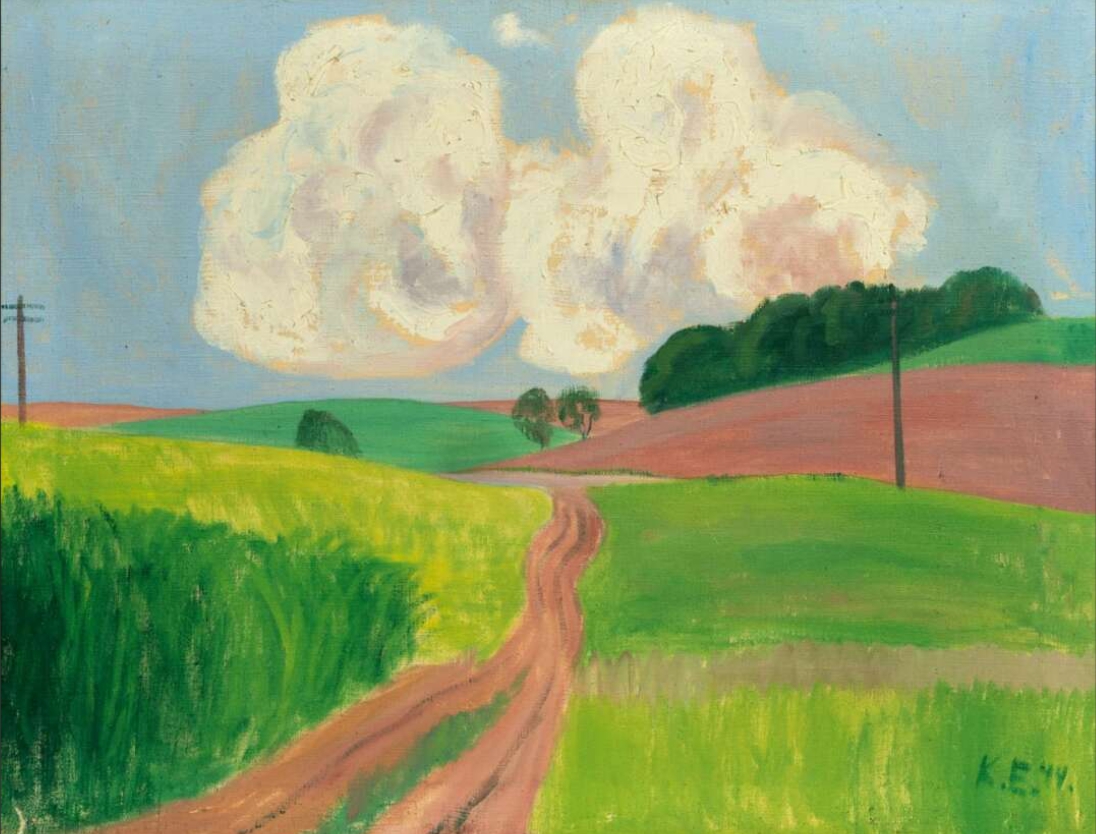
Kaj Ejstrup was a Danish artist, illustrator and sculptor. Above all, he is remembered for the landscapes he painted in the north west of Zealand as a member of the artists' colony known as the Odsherred Painters. In 1932, he was one of the founding members of the Corner artists association. Much of his work can be seen at Odsherreds Museum of Art.
